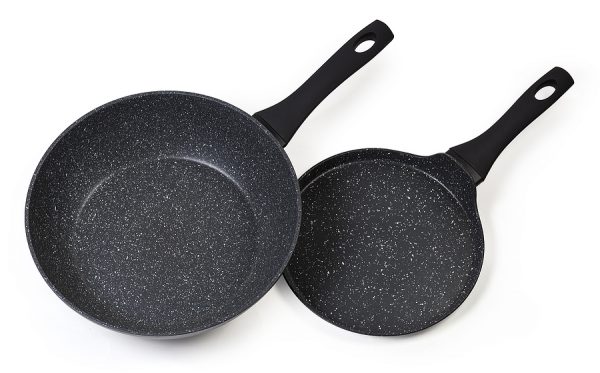By David Blyweiss, M.D., Advanced Natural Wellness
The debate over the link between aluminum and Alzheimer’s disease has been raging for over 50 years.
Study after study shows that aluminum is a neurotoxicant. It generates an inflammatory response in the brain. It promotes the accumulation and misfolding of beta amyloid and tau proteins. And it is often found in the brain tissue of patients with Alzheimer’s and other neurodegenerative diseases
Yet you’ll still hear that exposure to aluminum through foods, beverages and personal care products isn’t an issue – that dementia and impaired neural function are “never caused by routine exposure to aluminum.”
Well, I say that where there’s smoke, there’s fire.
There are a lot of things that lead to the development of Alzheimer’s disease. And while aluminum may not be the sole cause of it – nothing ever is – its’ extremely clear that aluminum is a VERY important contributor to the disease.
You see, amyloid plaques and tau are produced by the brain to protect itself from inflammatory conditions that can harm your cognitive function. But when high levels of brain inflammation are persistent, it drives the spread of misfolded plaques and tangles. This can eventually lead to dementia.
So aluminum – which is toxic to the brain and produces an inflammatory response – is going to contribute to those misfolded plaques and tangles. Thus, aluminum is definitely a BIG player in the development of Alzheimer’s disease.
Aluminum Exposure is Greater Than You Might Think!
We are exposed to aluminum every single day.
It is in our pots and pans, cooking utensils, canned beverages, aluminum foil and canned foods. And all of that aluminum leaches into your food. Acidic foods, like tomatoes or tomato-based products, are the worst.
V8 Juice is a perfect example. The acidity in this tomato blend is going to cause more aluminum to release into the product. The same thing happens with other canned tomato products, whether it is tomato juice, canned tomatoes or tomato paste.
Plus, the longer you cook or store your food in aluminum, the more of it will be released into your food.
So it’s a good idea to invest in good stainless-steel pots and pans. Pyrex and glass are good options for baking and storage needs. And whenever possible, buy your tomato and other acidic products in glass jars.
To make matters worse, aluminum is often added to food products to act as emulsifiers, firming agents and perform other functions. Processed dairy products, breakfast cereals, flour, cake, biscuits, baking powder, coffee, milk powder, table salts, bread, rice and soft drinks can all contain added aluminum.
But it’s not just about cookware and food.
Antiperspirants are another big source of aluminum exposure. They are really terrible because of all the blood vessels found in the armpit, not to mention the proximity to your lymph nodes.
Keep in mind that antiperspirants are not the same thing as regular deodorant. Regular deodorant just acts to neutralize odor, while antiperspirants work to keep your underarms dry. The aluminum acts as a sort of “plug” for the sweat glands to prevent sweat from escaping. And it continues to contribute to your body’s aluminum burden until it is washed off.
Instead of using an antiperspirant, look for moisture absorbing deodorants instead. Some ingredients that help keep moisture at bay and keep your underarms dry include baking soda, glycerin, clay, arrowroot powder and activated charcoal.
I also have a warning to women who use cosmetics. Things like as eye shadow, mascara, lipsticks, creams and mud masks can contain a lot of aluminum. So that can make you especially vulnerable to aluminum overload.
This may partially explain why women are disproportionately affected by Alzheimer’s.
How to Rid Your Body of Aluminum
One thing is very clear. Aluminum DOES contribute to the development of Alzheimer’s disease, so you must reduce your exposure to it as much as possible.
At the same time, it is very important to eliminate any toxic aluminum build-up in your body.
Over the years we’ve found an interesting connection between levels of silica in the body versus the amount of aluminum in the body. The more silica, the less aluminum. And people with higher silica intake have a reduced risk of dementia.
That’s because silica binds with the aluminum so that more of it is excreted in the urine. It’s almost like silica is a natural antidote for excess aluminum.
Some foods high in silica include green beans, bananas, apples, root vegetables, spinach and lentils. Black tea and mineral water also contain good levels of silica.
But one of the richest sources of silica in the herbal world is horsetail. About 25% of it’s dry weight is silica. This may be why it’s been used for thousands of years as an herbal remedy. Right behind horsetail is nettles, which also contains a large amount of silica. But one of the easiest ways to bring silica into your body and hydrate at the same time is with Fiji natural artisan water which is rich in the silica you want, 83mg./liter…more than almost a dozen other silica rich waters.
They say an ounce of prevention is worth a pound of cure. It’s much easier to stop Alzheimer’s before it starts than it is to live with the disease. And reducing the amount of aluminum in your life is such an easy thing to do.
SOURCES:
Yokel RA. The toxicology of aluminum in the brain: a review. Neurotoxicology. 2000 Oct;21(5):813-28.
Campbell A, Bondy SC. Aluminum induced oxidative events and its relation to inflammation: a role for the metal in Alzheimer’s disease. Cell Mol Biol (Noisy-le-grand). 2000 Jun;46(4):721-30.
Mold MJ, O’Farrell A, Morris B, Exley C. Aluminum and Neurofibrillary Tangle Co-Localization in Familial Alzheimer’s Disease and Related Neurological Disorders. J Alzheimers Dis. 2020;78(1):139-149.
Alasfar RH, Isaifan RJ. Aluminum environmental pollution: the silent killer. Environ Sci Pollut Res Int. 2021 Sep;28(33):44587-44597.
Rondeau V, Jacqmin-Gadda H, Commenges D, Helmer C, Dartigues JF. Aluminum and silica in drinking water and the risk of Alzheimer’s disease or cognitive decline: findings from 15-year follow-up of the PAQUID cohort. Am J Epidemiol. 2009 Feb 15;169(4):489-96.
Davenward S, Bentham P, Wright J, Crome P, Job D, Polwart A, Exley C. Silicon-rich mineral water as a non-invasive test of the ‘aluminum hypothesis’ in Alzheimer’s disease. J Alzheimers Dis. 2013;33(2):423-30.
Taylor PD, Jugdaohsingh R, Powell, JJ. Soluble Silica with High Affinity for Aluminum under Physiological and Natural Conditions. J. Am. Chem. Soc. 1997;119 (38), 8852-8856.
Exley C. Why Industry Propaganda and Political Interference Cannot Disguise the Inevitable Role Played by Human Exposure to Aluminum in Neurodegenerative Diseases, Including Alzheimer’s Disease. Front. Neurol. October 2014. Sadowska A, Świderski F. Bioavailability, and Safety of Silicon Derived from Foods and Other Sources Added for Nutritional Purposes in Food Supplements and Functional Foods. Applied Sciences. 2020; 10(18):6255.




